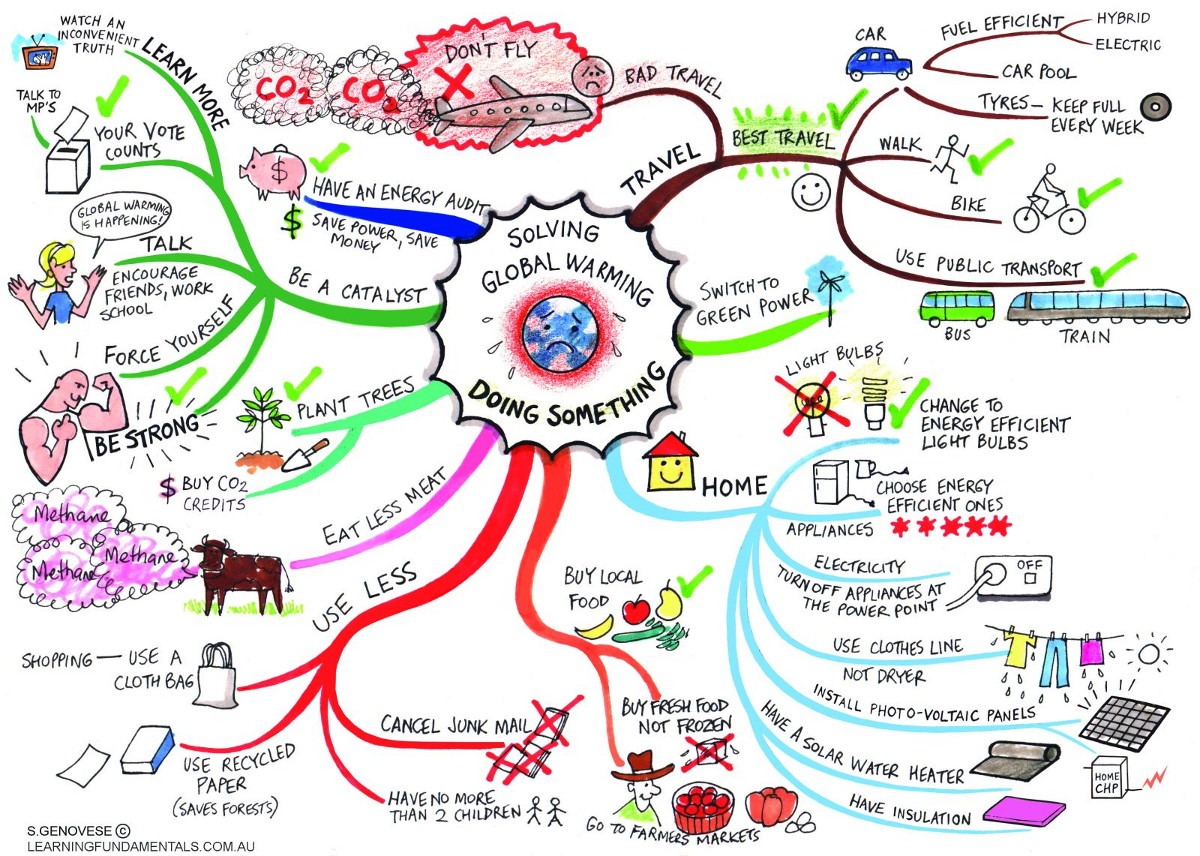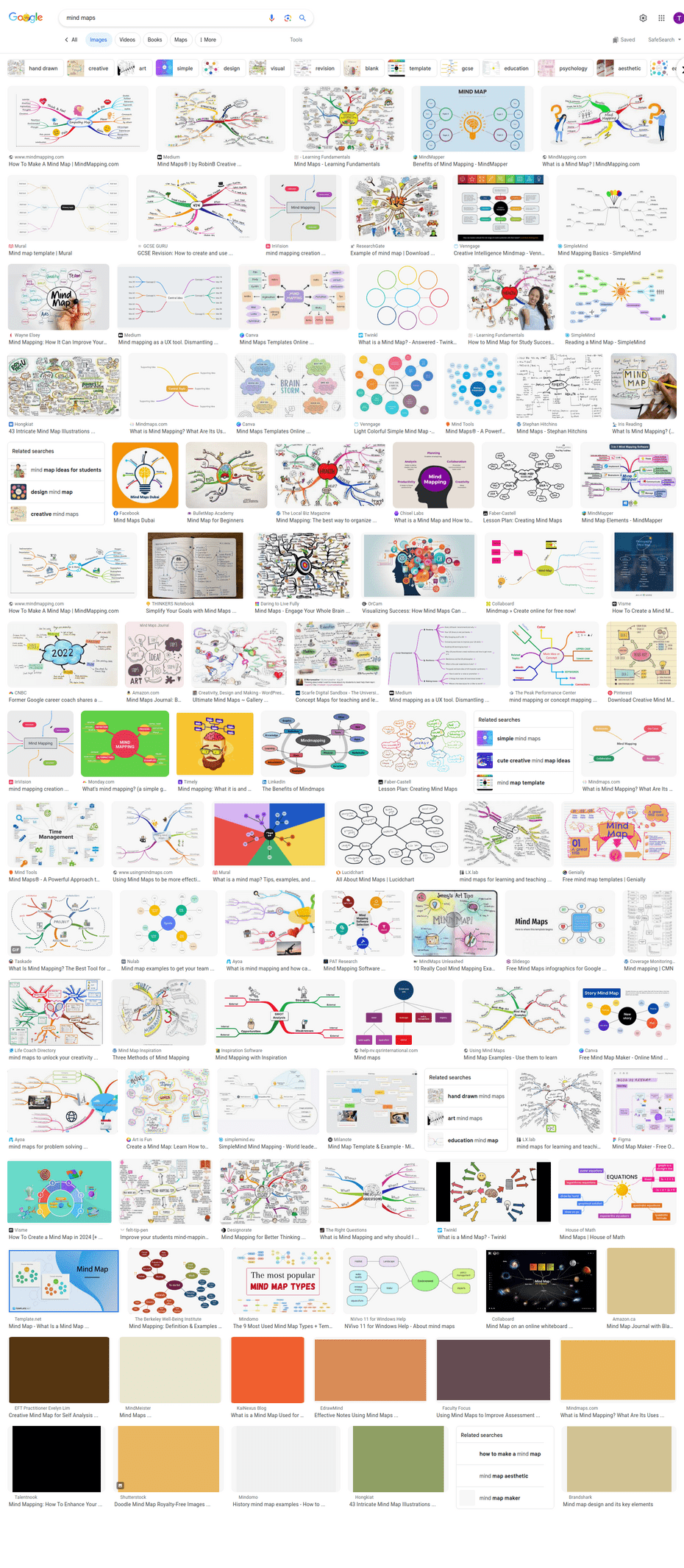Mind mapping can be used for any kind of planning, summarising of information, or presenting ideas and thoughts in a structured way.
–
–
–
Outline
First, write the main topic in the middle of a blank sheet of paper and draw a circle around it. Next, draw branches from the centre circle for each subtopic and above each branch add the respective heading. Draw new branches emanating from the subtopic branches, to which content is added in the form of key words.
You can substitute or compliment key words with meaningful symbols or drawings. Also you can use different colours, vary letter sizes, or connect ideas with arrows to structure information.

Comment
Mind mapping is one of the most effective tools for structuring lines of thought: you start with the most general idea (the topic in the centre) and then go into more and more detail (branches and sub-branches) as you move outward. It is possible to move freely from one sub-heading to another, never losing a thought or idea.
The reason this method is so effective is that it makes the best use of how the human brain works. Mind mapping is based on associative thinking, which reflects how language is processed in the memory. Mind mapping puts to use both the left and right brain hemispheres by creating the big picture at the same time as drawing attention to the details of the topic. The use of colours and drawings encourages this process even more.
In the beginning this method can seem cumbersome and counter-intuitive because over the years our brains have been accustomed to ordering information in a hierarchical way and always starting to write at the top-left corner of a page. However, the benefits of mind mapping are almost immediately apparent and after some training you will create your own style for drawing mind maps.
This method can be easily applied for group work exercises in which the participants create common mind maps in teams. Drawing instead of writing information offers better engagement opportunities for those participants who less verbal and more visual thinkers and learners by nature.
A mind map is an excellent way to present information because it attracts attention and presents both the big picture and the details in one image.
Mind mapping is also an effective learning tool, for example, for summarising a publication or book, writing notes during a lecture, or preparing for an exam.
Resources
There are many online mind mapping applications that offer exciting possibilities for online teaching and collaborative learning. Prices for these applications vary widely. However, if you come across a free offer, make sure you read the small print, for example, look at the privacy policy and check that you can export your data.
For personal use, I strongly recommend using a mind mapping application. These applications ensure a nice design, provide an infinite workspace, allow you to link information, rearrange information easily and export mind maps in various formats. Unfortunately, I do not know of a satisfactory free option: open source applications such as Freemind and it Freeplane have been around for a long time. They have good functionality, but their user interface and the visual design of the mind maps they create fall well short of most proprietary solutions. Personally, I used Simplemind for several years, which is comparatively cheap and requires a one-off payment rather than a recurring subscription fee. For the past three years, XMind has been my mind mapping application of choice: it is powerful yet easy to use, the mind maps created are beautiful, and it is available for all platforms, including Linux.
Examples of mind maps (Google Search Images)


